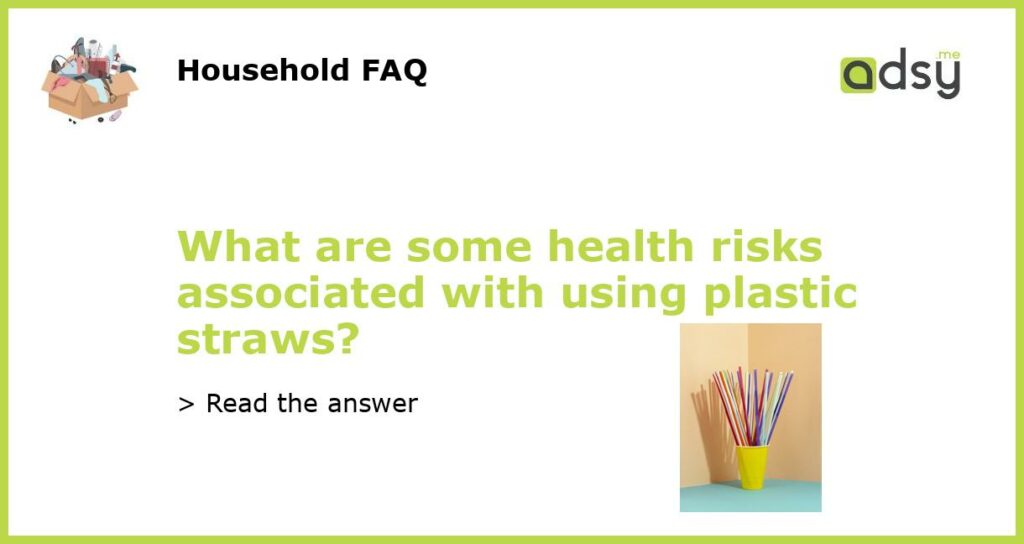Plastic Straws and Their Health Risks
Plastic straws have become a ubiquitous part of our everyday lives, used in cafes, restaurants, and even at home. While they may seem harmless, these single-use plastic items pose several health risks to both humans and the environment. In this article, we will explore some of the health risks associated with using plastic straws and discuss alternative options.
Chemical Leaching
One of the primary concerns with plastic straws is the potential for chemical leaching. Most plastic straws are made from polypropylene, which can release harmful chemicals such as bisphenol A (BPA) and phthalates.
Both BPA and phthalates are known endocrine disruptors, which means they can interfere with the body’s hormonal system. Research has linked exposure to these chemicals with various health issues, including reproductive problems, developmental disorders in children, and an increased risk of certain cancers.
When exposed to high temperatures, such as when sipping hot beverages through plastic straws or leaving them in a hot car, these chemicals can leach into the liquid and be ingested.
Microplastic Ingestion
Another concern associated with plastic straws is the ingestion of microplastics. Microplastics are tiny plastic particles measuring less than 5 millimeters in length.
Plastic straws can break down over time, especially when exposed to sunlight and heat. As a result, small plastic particles can enter the liquid and be consumed when using a straw. These microplastics can then accumulate in the body and potentially lead to digestive system issues and other health problems.
Furthermore, microplastics have been found in our water supply, including tap water and bottled water. This means that even if you don’t directly ingest them through a plastic straw, you may still be exposed to them through other means.
Increased Risk of Dental Issues
Using plastic straws can also contribute to dental problems. When you drink beverages through a straw, the liquid bypasses your teeth and goes directly into your mouth, which reduces the exposure of your teeth to saliva.
Saliva plays a crucial role in protecting your teeth from acid and bacteria, so decreased saliva flow can increase the risk of tooth decay and other dental issues. Additionally, drinking through a narrow straw can cause repetitive motion injuries to your mouth, including tooth sensitivity and jaw pain.
Environmental Impact
It’s important to note that the health risks associated with plastic straws extend beyond our own well-being and impact the environment as well. Plastic straws are a major contributor to plastic pollution, and their production, use, and disposal have a significant ecological footprint.
Plastic straws take hundreds of years to break down, and during this process, they release microplastics into the environment. These microplastics can end up in our oceans, where they pose a threat to marine life. Sea animals may ingest the straws, causing injury and even death.
Safer Alternatives
To mitigate the health risks associated with plastic straws, there are several alternative options available:
- Reusable straws made from stainless steel, glass, or bamboo are durable and can be washed and reused. They eliminate the need for single-use plastic straws and reduce waste.
- Paper straws are biodegradable and a better alternative to plastic straws. However, they may not be as durable and can become soggy when used for extended periods.
- Some companies have started producing edible straws made from materials such as rice, wheat, or even pasta. These straws are meant to be eaten after use, eliminating any waste.
- When dining out, consider skipping the straw altogether or requesting your drink without a straw. This small behavior change can help reduce plastic pollution.
In conclusion, plastic straws pose several health risks, including chemical leaching, microplastic ingestion, and dental problems. These risks are not only harmful to humans but also contribute to environmental damage. By opting for alternative options or reducing straw usage altogether, we can protect both our health and the planet.






